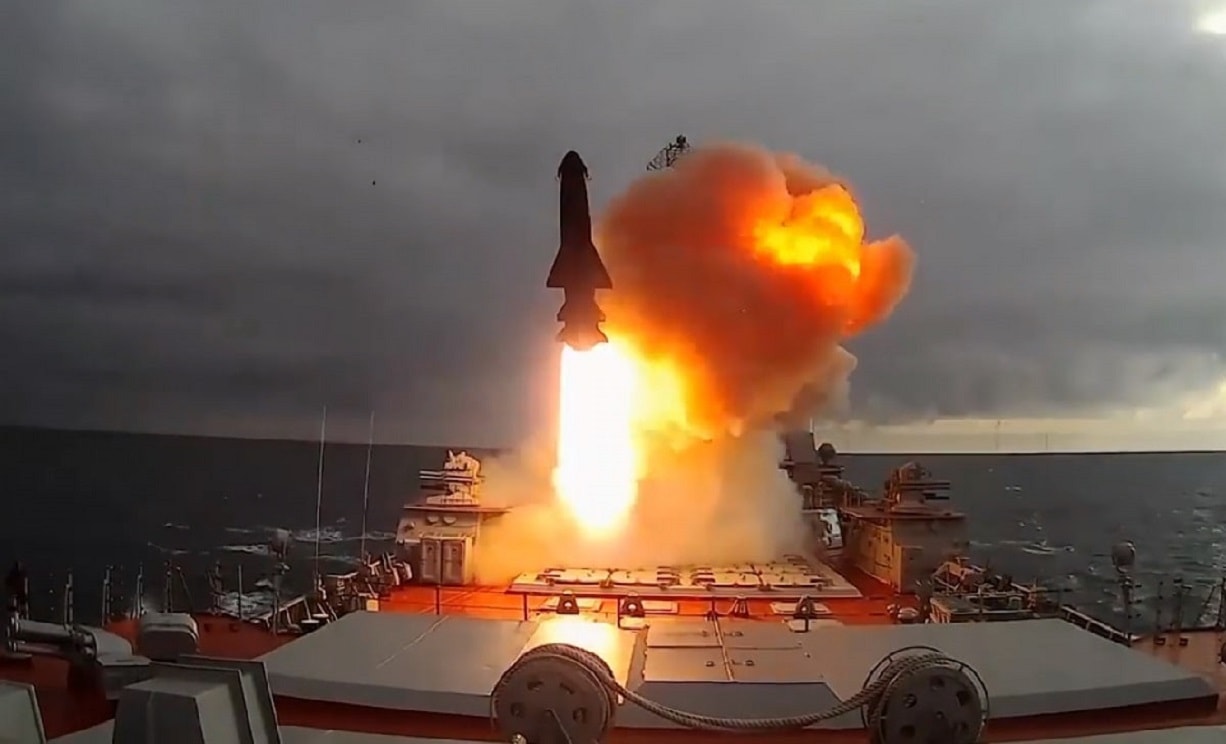Russia’s frigates of the Admiral Gorshkov-class are some of the most modern in the Russian Navy today and are slated to be the recipients of Russia’s newest missile systems. The class is intended to be a cornerstone of Russia’s navy in the future and is designed to add to the global reach of Russia’s navy.
Specs of the Class
The Admiral Gorshkov class for the Soviet Union’s Admiral of the Fleet Sergei Gorshkov, who spearheaded a massive buildup of the Soviet Navy during the Cold War into a blue water force designed to go toe-to-toe with the U.S. Navy. Officially known as the Project 22350, the Admiral Gorshkov can be best classified as a guided missile frigate due to its arsenal of anti-ship cruise missiles. With sixteen vertical launch system (VLS) cells, the class can carry a mixture of Kalibr cruise missiles or P-800 anti-ship cruise missiles. The lead ship of the class, the titular Admiral Gorshkov, has also served as a test platform for the novel Tsirkon hypersonic cruise missile, which can reportedly reach speeds of Mach 8. As announced by Russian President Vladimir Putin in his July 31 Navy Day speech, the Admiral Gorshkov will be the first ship to receive the ship in active service, which is supposed to take place within a month, according to Putin.
In addition to its cruise missile armament, ships of the Project 22350 class are equipped with the “Poliment Redut” anti-air system and the “Medvedka” anti-submarine suite. The class is also outfitted with a single A-192M 130mm cannon located on the front of the ship. Admiral Gorshkov class vessels are also designed to carry a single Ka-27PL submarine for anti-submarine warfare. According to Russian sources, the class has a significant operational range of 4,500 nautical miles, a full speed of 30 knots, and a crew of somewhere between 180 and 210 sailors.
Development of the Admiral Gorshkov Class
The design of the Admiral Gorshkov class was first accepted by Russian naval leaders in 2003, and in 2005, the Admiral Gorshkov was ordered by the Russian Navy, making it one of the first major naval development projects undertaken by Russia since the collapse of the Soviet Union. Finally completed in 2018, Admiral Gorshkov was later joined by Admiral Kasatonov in 2020. Interestingly, both frigates are the only two of the class which relies on Ukrainian-made engines, the planned further supply of which was terminated by a wider untangling of the Ukrainian and Russian defense industries following Russia’s 2014 seizure of Crimea and invasion of eastern Ukraine.
Subsequent iterations of the class currently in production are reportedly designed to include 24 or 32 VLS cells, doubling the capacity of the Admiral Gorshkov. In 2018, the Russian state media outlet Tass reported that six examples of the class were planned to be delivered by 2025. However, it is unlikely that this goal will be reached on schedule. Since the commissioning of the Admiral Gorshkov and Admiral Kasatonov, only a third example of the class (known as the Admiral Golovko) had been launched. The Admiral Golovko has been touted by Russian media as the first of the class to be propelled by a Russian engine, giving it a “Russian soul.”
Where Does the Admiral Gorshkov Class Fit into Russia’s Naval Doctrine?
In a way, the class’s namesake gives some insight into the role which the frigate is designed to fulfill.
Just as the Soviet Union’s Admiral Gorshkov endeavored to turn the Soviet Navy into a blue water navy capable of challenging the United States, Russia’s new naval doctrine signed by Putin on Navy Day shortly before his speech on July 31 names the United States as the principal challenge to Russian interests on the “world ocean,” which Russia seeks to counter by developing a formidable navy of its own capable of imposing its will around the world.
While not particularly long-ranged compared to analogous ships in Western navies, the Admiral Gorshov and its sister ships are designed to fit right into this intended long-range future of the Russian Navy, regardless of financial and logistical pressures which will challenge the future development of the fleet. Shortly after Admiral Gorshkov’s commissioning, the ship took part in a world tour, visiting Djibouti, Sri Lanka, China, Ecuador, Cuba, Trinidad and Tobago, and Cape Verde.
It is more likely than not that the ships of the Admiral Gorshkov class will be spotted all over the world for years to come as the Russian state attempts to build an identity for itself as a world naval power.
19FortyFive’s Russian Defense Studies Editor, Wesley Culp is a Research Fellow at the Center for the Study of the Presidency and Congress. He regularly writes on Russian and Eurasian leadership and national security topics and has been published in The Hill as well as in the Diplomatic Courier. He can be found on Twitter @WesleyJCulp.

